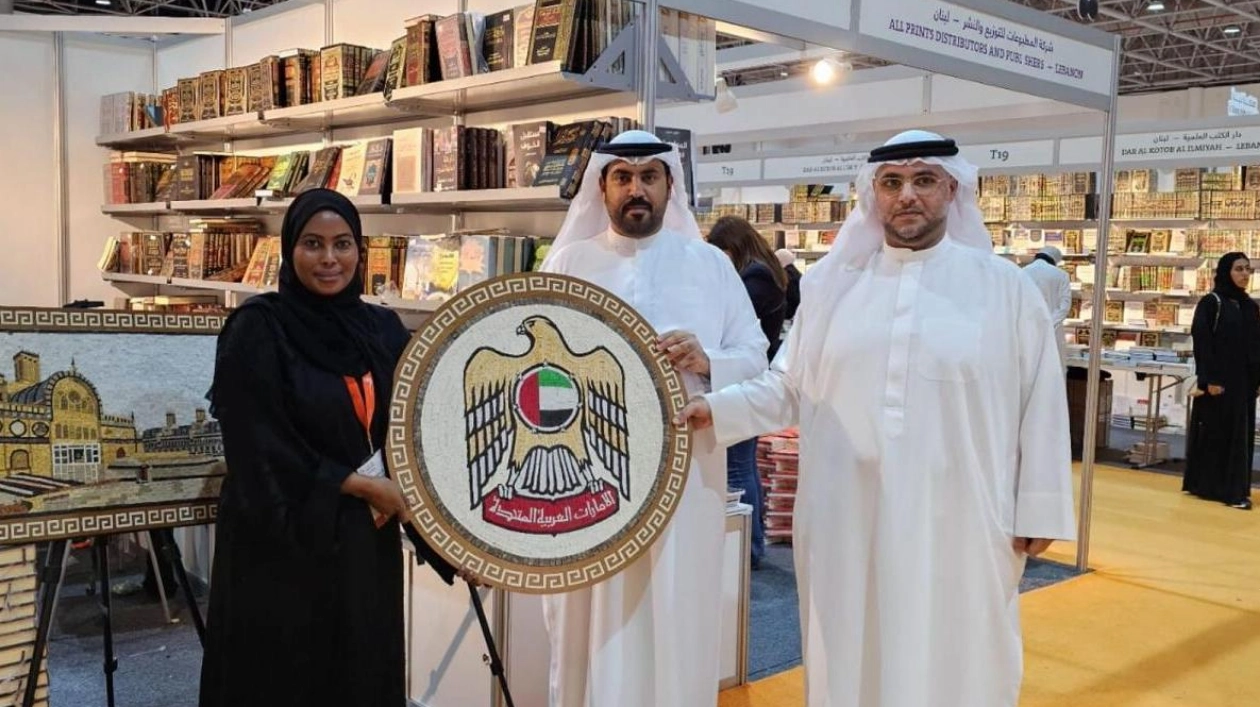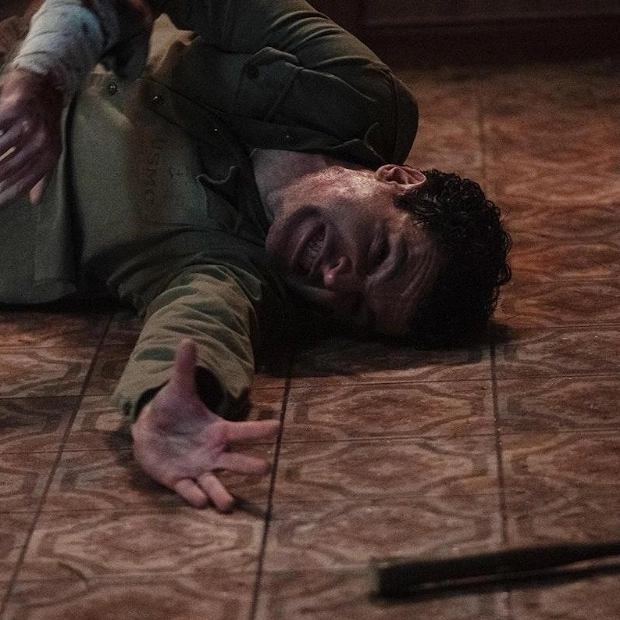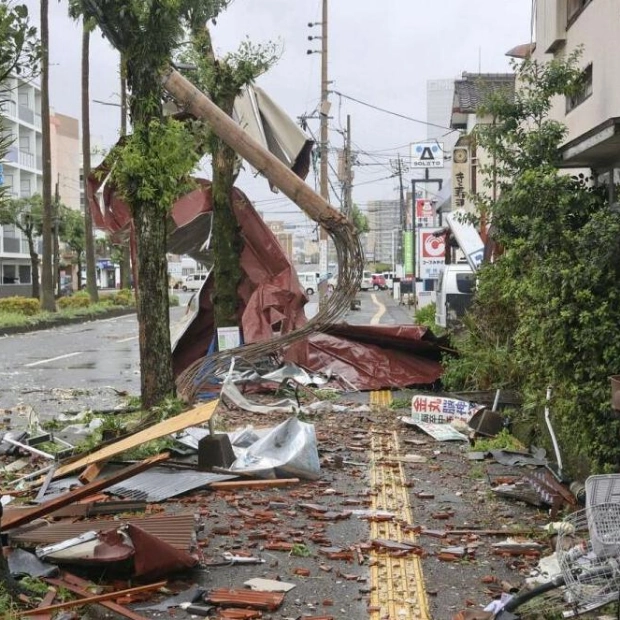A mosaic artwork crafted from 1,971 stones of different sizes and colors was created in Mauritania and presented as a gift to the UAE during the Sharjah International Book Fair (SIBF). A representative from the Dar Al-Mazhab pavilion handed over the mosaic as a token of appreciation from the Najibawayh Knowledge House in the Islamic Republic of Mauritania.
"This modest gesture is to convey our thanks for the support the United Arab Emirates has extended to us. The artwork, featuring an eagle and the name of the United Arab Emirates inscribed in Arabic, was meticulously crafted using 1,971 mosaic stones, symbolizing the year of the UAE's union," explained the representative.
Ahmed Najib Ould Al-Sharif, the founder and director of Diwan Al-Shanagita (the Repository of Mauritanian Heritage and Literature) and Dar Al-Mazhab for Printing, Publishing, and Distribution, detailed the process of creating the mosaic. Artists from the institution's art department selected and arranged 1,971 pebbles of varying sizes and colors. A black-and-white image of the UAE's falcon was placed on a circular wooden base to serve as a guide. The artists carefully arranged the pebbles over the image, painted them in the official colors of the UAE, and secured them with natural glue.
Al-Sharif added white pebbles for the background until the total number reached 1,971. Once completed, the artwork was framed with a circular border to ensure the pebbles remained secure and the piece was flawless. Al-Sharif noted that creating such a mosaic typically takes between 20 and 40 days, depending on its complexity and the number of pebbles used.
The mosaic stones originate from Mauritania, a desert nation with landscapes similar to those in the Gulf countries. The region's mountains, such as Atar Mountain, provide the rocks used in mosaic paintings. Mosaic and tessellation arts are relatively new in Mauritania, introduced by the Najibawayh Knowledge House. However, mosaic art has ancient roots, dating back to the Greeks who used it to decorate palaces and temples. The Romans later adopted the practice, and Muslims used mosaics in mosques and royal palaces in Andalusia. The art then spread to the Maghreb and the Levant, where it adorned the Dome of the Rock and sites in Petra, Jordan, and its surroundings.
Al-Sharif highlighted the most challenging aspect of the mosaic: writing the phrase "United Arab Emirates" under the falcon. This required forming and molding fine-sized pebbles. The piece was described as highly distinctive and presented to the SIBF administration as a gesture of gratitude to the UAE for its support of the book fair.
Another mosaic artwork showcased at SIBF depicted the Chinguetti mosque in Mauritania, an essential place of worship built in the 13th or 14th century. The minaret, believed to be the second oldest in the Muslim world, is still in use today. The Dar Al Mazhab pavilion representative noted that the Chinguetti mosque still uses the sun to determine prayer times, symbolizing the preservation of Mauritania's heritage and history.
Al-Sharif also mentioned an upcoming project by the Najibawayh Knowledge House in Mauritania: a mosaic artwork to be displayed at the forthcoming Abu Dhabi Book Fair. The mosaic will honor the late Sheikh Zayed bin Sultan Al Nahyan, the Founding Father of the UAE.
Source link: https://www.khaleejtimes.com






